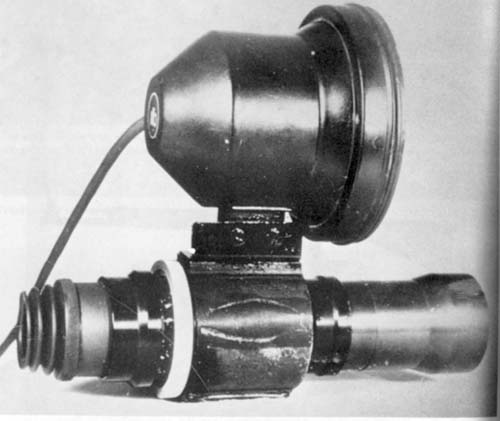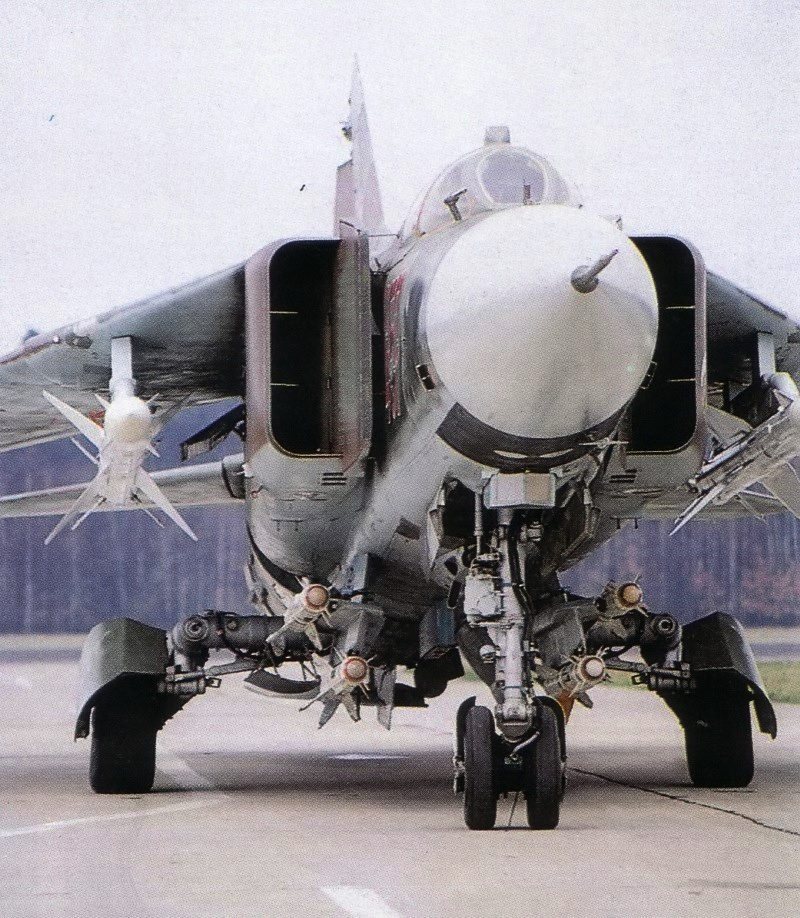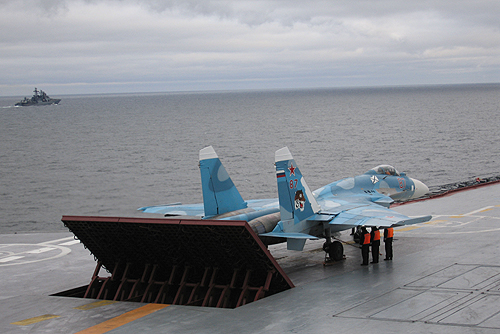|
Vympel R-27
The Vympel R-27 (NATO reporting name AA-10 Alamo) is a family of air-to-air missiles developed by the Soviet Union during the late Cold War-era. It remains in service with the Russian Aerospace Forces, air forces of the Commonwealth of Independent States and air forces of many other countries as the standard medium-range air-to-air missile despite the development of the more advanced R-77. The R-27 is manufactured in infrared-homing/IR (R-27T, R-27ET), semi-active radar homing/ SARH (R-27R, R-27ER), and active-radar homing/ARH (R-27EA) versions. R-27 family missiles are produced by both Russian and Ukrainian manufacturers. The R-27 missile is carried by the Mikoyan MiG-29 and Sukhoi Su-27 family fighters. The R-27 missile is also license-produced in China, though the production license was bought from Ukraine instead of Russia. Variants * R-27R: ''AA-10 Alamo-A'', semi-active radar homing. Missile can be used at altitude (launch platform or target). Effective kill range f ... [...More Info...] [...Related Items...] OR: [Wikipedia] [Google] [Baidu] |
German Air Force
The German Air Force (, ) is the aerial warfare branch of the , the armed forces of Germany. The German Air Force (as part of the ) was founded in 1956 during the era of the Cold War as the aerial warfare branch of the armed forces of West Germany. After the reunification of West and East Germany in 1990, it integrated parts of the air force of the former German Democratic Republic, which itself had been founded in 1956 as part of the National People's Army. There is no organizational continuity between the current Luftwaffe of the Bundeswehr and the former Luftwaffe of the Wehrmacht founded in 1935, which was completely disbanded in 1945/46 after World War II. The term that is used for both the historic and the current German air force is the German-language generic designation of any air force. The commander of the German Air Force is Lieutenant General Ingo Gerhartz. As of 2015, the German Air Force uses eleven air bases, two of which host no flying units. Furthermore, ... [...More Info...] [...Related Items...] OR: [Wikipedia] [Google] [Baidu] |
Infrared Homing
Infrared homing is a Missile guidance#Passive homing, passive weapon guidance system which uses the infrared (IR) light emission from a target to track and follow it seamlessly. Missiles which use infrared seeking are often referred to as "heat-seekers" since infrared is radiated strongly by hot bodies. Many objects such as people, vehicle engines and aircraft generate and emit heat and so are especially visible in the infrared wavelengths of light compared to objects in the background. Infrared seekers are passive devices, which, unlike radar, provide no indication that they are tracking a target. That makes them suitable for sneak attacks during visual encounters or over longer ranges when they are used with a forward looking infrared or similar cueing system. Heat-seekers are extremely effective: 90% of all timeline of United States military operations, United States air combat losses between 1984 and 2009 were caused by infrared-homing missiles. They are, however, subject ... [...More Info...] [...Related Items...] OR: [Wikipedia] [Google] [Baidu] |
R-27 T 3D
R- may represent: *a type of chirality, in chemical notation *an ''R'' prefix used for various constants *the set of negative real numbers *negative reinforcement In behavioral psychology, reinforcement refers to consequences that increase the likelihood of an organism's future behavior, typically in the presence of a particular '' antecedent stimulus''. For example, a rat can be trained to push a lever ..., in behavioural psychology *membership of the United States Republican Party, when placed before a state abbreviation, usually in parentheses after the name of a politician {{Disambiguation ... [...More Info...] [...Related Items...] OR: [Wikipedia] [Google] [Baidu] |
Shenyang J-11
The Shenyang J-11 ( Chinese: 歼-11; NATO reporting name: Flanker-B+/Flanker-L), also known as Yinglong ( zh, s=应龙, t=應龍, p=yìnglóng, l=responsive dragon). is a 4th generation twin-engine jet fighter of the People's Republic of China derived from the Soviet-designed Sukhoi Su-27SK. It is manufactured by the Shenyang Aircraft Corporation (SAC). The aircraft is operated by the People's Liberation Army Air Force (PLAAF) and the People's Liberation Army Naval Air Force (PLANAF). Development Proposed J-11 Based on experience from the Vietnam War, the PLAAF issued a requirement in 1969 for a STOL light fighter to replace the Shenyang J-6 and Nanchang Q-5. The proposal from the Shenyang Aircraft Design Institute and Shenyang Aircraft Factory was designated "J-11"; it resembled a French Dassault Mirage F1 and was powered by a British Rolls-Royce Spey 512 engine. The project was abandoned as no suitable engine could be procured, and the competing Nanchang J-12 was f ... [...More Info...] [...Related Items...] OR: [Wikipedia] [Google] [Baidu] |
Yak-141
The Yakovlev Yak-141 (; NATO reporting name "Freestyle"), also known as the Yak-41, is a Soviet supersonic vertical takeoff/landing (VTOL) fighter aircraft designed by Yakovlev. Intended as a replacement for the Yak-38, it was designed as a supersonic fleet defence fighter capable of STOVL/VTOL operating from Soviet carriers. Four prototypes were built before the project's cancellation. Design and development Known internally as "Product 48", the Yak-41 was intended to replace the Yak-38 in service with the Soviet Navy. It went through significant design evolution. Configurations studied by Yakovlev included a twin-engine configuration, which was rejected due to asymmetric thrust issues in the event of an engine failure during landing, and a single-engined configuration, with lift jets to allow for vertical takeoff and landing, was selected. The engines were controlled digitally; manuverability during the hover was provided by reaction control jets, using excess airflow from ... [...More Info...] [...Related Items...] OR: [Wikipedia] [Google] [Baidu] |
MiG-29
The Mikoyan MiG-29 (; NATO reporting name: Fulcrum) is a twinjet, twin-engine fighter aircraft designed in the Soviet Union. Developed by the Mikoyan design bureau as an air superiority fighter during the 1970s, the MiG-29, along with the larger Sukhoi Su-27, was developed to counter U.S. fighters such as the McDonnell Douglas F-15 Eagle and the General Dynamics F-16 Fighting Falcon. The MiG-29 entered service with the Soviet Air Forces in 1983. While originally oriented towards combat against any enemy aircraft, many MiG-29s have been furnished as multirole combat aircraft, multirole fighters capable of performing a number of different operations, and are commonly outfitted to use a range of air-to-surface armaments and precision munitions. The MiG-29 has been manufactured in several major variants, including the multirole Mikoyan MiG-29M and the navalised Mikoyan MiG-29K; the most advanced member of the family to date is the Mikoyan MiG-35. Later models frequently feature impr ... [...More Info...] [...Related Items...] OR: [Wikipedia] [Google] [Baidu] |
MiG-23
The Mikoyan-Gurevich MiG-23 (; NATO reporting name: Flogger) is a variable-geometry fighter aircraft, designed by the Mikoyan-Gurevich design bureau in the Soviet Union. It is a third-generation jet fighter, alongside similar Soviet aircraft such as the Su-17 "Fitter". It was the first Soviet fighter to field a look-down/shoot-down radar, the RP-23 Sapfir, and one of the first to be armed with beyond-visual-range missiles. Production started in 1969 and reached large numbers with over 5,000 aircraft built, making it the most produced variable-sweep wing aircraft in history. The MiG-23 remains in limited service with some export customers. The basic design was also used as the basis for the Mikoyan MiG-27, a dedicated ground-attack variant. Among many minor changes, the MiG-27 replaced the MiG-23's nose-mounted radar system with an optical panel holding a laser designator and a TV camera. Development The MiG-23's predecessor, the MiG-21, was fast and agile, but limited ... [...More Info...] [...Related Items...] OR: [Wikipedia] [Google] [Baidu] |
F-14
The Grumman F-14 Tomcat is an American carrier-capable supersonic aircraft, supersonic, twinjet, twin-engine, Tandem#Aviation, tandem two-seat, twin-tail, all-weather-capable variable-sweep wing fighter aircraft. The Tomcat was developed for the United States Navy's Naval Fighter Experimental (VFX) program after the collapse of the General Dynamics–Grumman F-111B, General Dynamics-Grumman F-111B project. A large and well-equipped fighter, the F-14 was the first of the American Teen Series fighters, which were designed incorporating aerial warfare, air combat experience against smaller, more maneuverable List of Mikoyan and MiG aircraft, MiG fighters during the Vietnam War. The F-14 first flew on 21 December 1970 and made its first deployment in 1974 with the U.S. Navy aboard the aircraft carrier , replacing the McDonnell Douglas F-4 Phantom II. The F-14 served as the U.S. Navy's primary maritime air superiority fighter, fleet defense interceptor aircraft, interceptor, and tac ... [...More Info...] [...Related Items...] OR: [Wikipedia] [Google] [Baidu] |
Su-37
The Sukhoi Su-37 (-37; NATO reporting name: Flanker-F; popularly nicknamed "Terminator") was a single-seat twin-engine aircraft designed by the Sukhoi Design Bureau which served as a technology demonstrator. It met the need to enhance pilot control of the Su-27M (later renamed Su-35), a further development of the Su-27. The sole example built was originally the eleventh Su-27M (T10M-11) built by the Komsomolsk-on-Amur Aircraft Production Association before having thrust-vectoring nozzles installed. It also had updated flight- and weapons-control systems. The aircraft made its maiden flight in April 1996. Throughout the flight-test program, the Su-37 demonstrated its supermanoeuvrability at air shows, performing manoeuvres such as a 360-degree somersault. The aircraft crashed in December 2002 due to structural failure. The Su-37 did not enter production, despite a report in 1998 which claimed that Sukhoi had built a second Su-37 using the twelfth Su-27M airframe, T10M-11 ... [...More Info...] [...Related Items...] OR: [Wikipedia] [Google] [Baidu] |
Su-35
The Sukhoi Su-35 (-35; NATO reporting name: Flanker-E/M, occasionally nicknamed "Super Flanker") is the designation for two improved derivatives of the Su-27 air-defence fighter. They are single-seat, twin-engine, supermaneuverable, 4.5 generation air superiority fighters, designed by the Sukhoi Design Bureau and built by Sukhoi. The type was originally developed by the Soviet Union from the Su-27 and was known as the Su-27M. It incorporated canards and a multi-function radar giving it multi-role capabilities. The first prototype made its maiden flight in June 1988. Following the dissolution of the Soviet Union Sukhoi re-designated it as the Su-35 to attract export orders. Fourteen aircraft were produced and used for tests and demonstrations; one example had thrust-vectoring engines and was in turn redesignated the Su-37. A sole Su-35UB two-seat trainer was also built in the late 1990s that resembled the Su-30MK family. In 2003, Sukhoi embarked on a second "deep" mo ... [...More Info...] [...Related Items...] OR: [Wikipedia] [Google] [Baidu] |
Su-34
The Sukhoi Su-34 (; NATO reporting name: Fullback) is a Soviet-origin Russian twin-engine, twin-seat, all-weather supersonic medium-range fighter-bomber/ strike aircraft. It first flew in 1990, intended for the Soviet Air Forces, and it entered service in 2014 with the Russian Air Force. Based on the Sukhoi Su-27 Flanker air superiority fighter, the Su-34 has a wider, armoured cockpit with side-by-side seating for its two pilots. The Su-34 was designed primarily for tactical deployment against ground and naval targets (tactical bombing/ attack/interdiction roles, including against small and mobile targets) on solo and group missions in daytime and at night, under favourable and adverse weather conditions and in a hostile environment with counter-fire and electronic warfare (EW) counter-measures deployed, as well as for aerial reconnaissance. The Su-34 is planned to eventually replace the Su-24 tactical bomber and the Tu-22M long-range bomber. Development Beginnings (1980s) T ... [...More Info...] [...Related Items...] OR: [Wikipedia] [Google] [Baidu] |
Su-33
The Sukhoi Su-33 (-33; NATO reporting name: Flanker-D) is a Soviet/Russian all-weather Carrier-based aircraft, carrier-based twinjet, twin-engine air superiority fighter designed by Sukhoi and manufactured by Komsomolsk-on-Amur Aircraft Production Association, derived from the Sukhoi Su-27, Su-27 and initially known as the Su-27K. Compared with the Su-27, the Su-33 has a strengthened Landing gear, undercarriage and structure, folding wings and stabilators, all for carrier operations. The Su-33 has Canard (aeronautics), canards, and its wings are larger than the Su-27 for a slower stall speed. The Su-33 has upgraded engines and a twin nose wheel, and is Aerial refueling, air refuelable. First used in operations in 1995 aboard the aircraft carrier , the fighter officially entered service in August 1998, by which time the designation "Su-33" was used. Following the Dissolution of the Soviet Union, break-up of the Soviet Union and the subsequent downsizing of the Russian Navy, onl ... [...More Info...] [...Related Items...] OR: [Wikipedia] [Google] [Baidu] |








